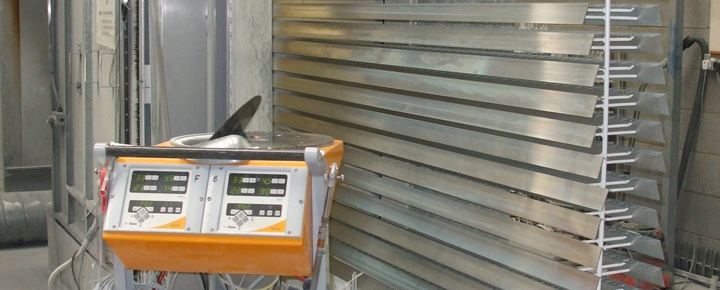Fabrication on Aluminium Profiles – Punching, Drilling, Tapping
When it comes to fabricating aluminum profiles, several processes are involved in shaping the profiles according to their specific requirements. Three such techniques are punching, drilling, and tapping. These processes are widely used in various industries, including construction, automotive, aerospace, and electronics, to fabricate aluminium profiles according to specific design requirements. They provide flexibility and precision in shaping the profiles, enabling the creation of customized components and structures. Once the fabrication is complete, the aluminium profiles are usually subjected to a surface treatment process known as aluminum powder coating. The process involves the application of a dry powder onto the surface of an aluminium profile to protect it from external factors such as corrosion.
To understand the fabrication and powder coating of the aluminium profile here’s a quick overview of each process:
Fabrication Techniques for Aluminum Profiles
Punching: It involves creating holes or cutouts in aluminium profiles using a punch and die set. The punch applies force to the material, causing it to deform and create the desired hole or shape. Punching is often used to create holes for fasteners and connectors or to accommodate wiring and cables.
Drilling: Drilling is a process that involves using a rotating drill bit to create holes in aluminium profiles. The drill bit cuts into the material, removing material as chips and creating a hole. Drilling is commonly used for precise hole placement and is suitable for various diameters and depths.
Tapping: Tapping is creating threads inside a drilled hole in aluminum profiles. A tap cuts grooves into the material, forming internal threads. This allows screws or bolts to be securely fastened into the profile. Tapping is often used in applications where fastening or assembly is required.
It’s important to note that aluminium profiles can undergo these processes after being subjected to other fabrication steps, such as cutting or bending, depending on the desired end product.
Enhancing Durability and Aesthetics: The Advantages of Aluminium Powder Coating
Aluminum powder coating is typically done after fabrication on aluminium profiles. Once the fabrication is complete, the aluminium profiles are subjected to a surface treatment process that involves powder coating, a method of applying a protective and decorative coating to the surface of the aluminium profiles. The powder coating process involves electrostatically applying dry powder to the surface of the profiles. It is typically the final step applied to the finished fabricated profiles to enhance their appearance and protect against corrosion, weathering, and other environmental factors.
Here are some advantages of aluminium powder coating and how it benefits aluminium profiles.
- Superior Protection: A protective barrier is formed on the surface during the coating process, preventing corrosion, oxidation, and fading caused by dirt, moisture, chemicals, and UV radiation.
- Enhanced Durability: The powder coating process creates a tough, resilient coating that resists chipping, cracking, and peeling. It enables the aluminium profiles to withstand harsh weather conditions, impacts, and abrasions.
- Wide Range of Colors and Finishes: Aluminium powder coating provides a variety of colours, textures, and effects, allowing for customization to match specific design requirements and aesthetic preferences.
- Eco-Friendly Solution: Powder coating is environmentally friendly, free from flammable and hazardous substances. It produces minimal waste and can be collected and reused, reducing material consumption.
- Ease of Application and Maintenance: Powder coating, even on complex shapes, is easy to apply. Once applied, it is highly resistant to fading, scratching, and staining and requires low maintenance. Regular cleaning with mild detergents and water is usually sufficient to maintain its appearance.
Conclusion
Fabrication techniques for aluminium profiles include punching, drilling, and tapping, which is used to create holes, cutouts, and threads. These processes are commonly employed for fastening, wiring, and assembly purposes. After fabrication, aluminium profiles can undergo powder coating, a surface treatment process that enhances durability and aesthetics. Powder coating is environmentally friendly, easy to apply, requires low maintenance, and offers superior protection against corrosion, fading, etc. It also provides a wide range of colours and finishes for customization while requiring minimal maintenance, making it an ideal choice for enhancing the appearance and longevity of aluminium profiles.In India, several aluminum powder manufacturers supply powder coatings for various industries. It’s advisable to conduct an online search or consult local directories to find specific manufacturers and suppliers, as they may have valuable insights and recommendations for reputable manufacturers such as JM Aluminium. Additionally, industry trade shows, exhibitions, and business directories can be useful resources for finding reliable aluminum powder coating manufacturers in India.




